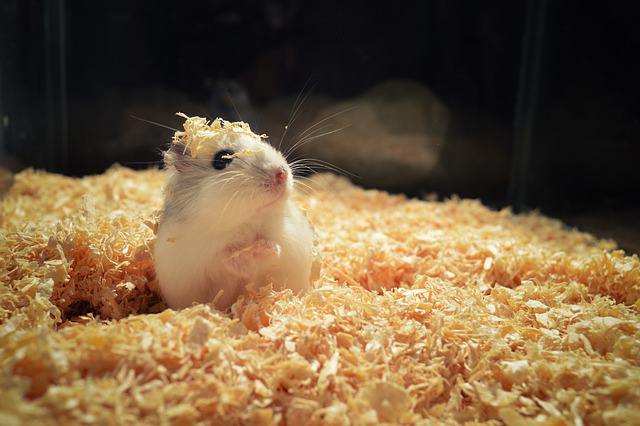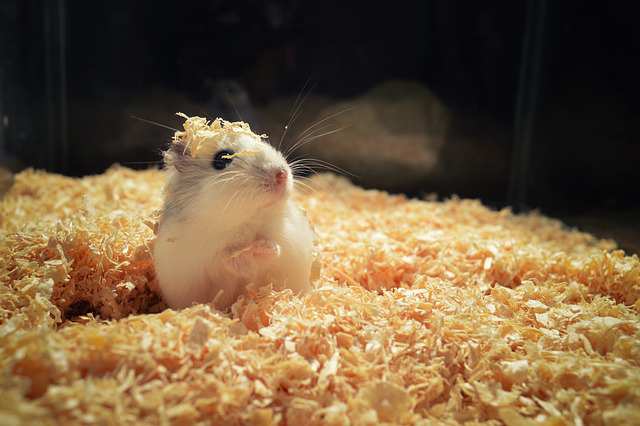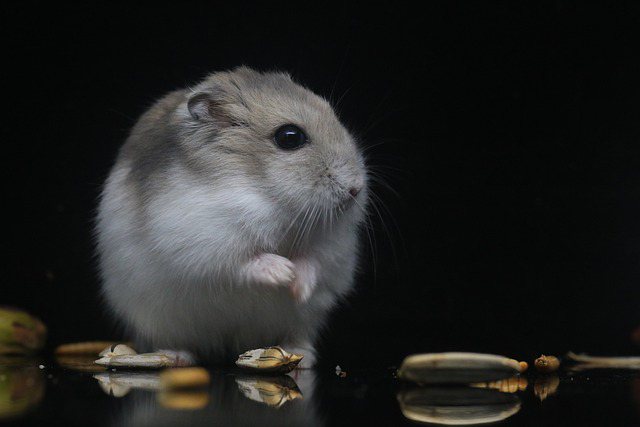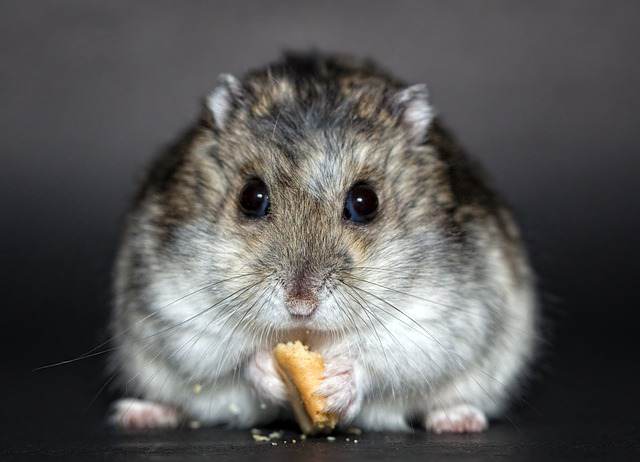10 Common Hamster Depression Symptoms & Tips

Let’s discuss some common hamster depression symptoms together…
We often associate our furry friends with boundless energy and happiness, but did you know that hamsters can experience depression too?
In this eye-opening blog post, we’ll delve into the world of hamster depression symptoms, shedding light on the often-overlooked emotional well-being of our pint-sized pals.
Hamster Depression Symptoms
The following are some common hamster depression symptoms and some tips:
1. Social Withdrawal: If your hamster starts avoiding human interaction or isolating itself from other hamsters in its cage, it may be struggling emotionally. Hamsters are social animals and tend to thrive on companionship.
Tips: Devote regular time to interact with your hamster through gentle handling, speaking in soothing tones, and providing treats. If you have multiple hamsters, ensure they have adequate space and resources to coexist peacefully.
2. Excessive Grooming or Neglecting Grooming: Hamsters groom themselves as a way to soothe and comfort. However, when grooming becomes excessive or neglected, it can be an indicator of emotional distress.
Tips: Place a dust bath in their habitat to facilitate natural grooming behaviors. Minimize stressors like loud noises, sudden movements, or changes in their environment that might contribute to over-grooming.
3. Decreased Activity Level: Hamsters are naturally energetic creatures, so a sudden drop in activity could be an early sign of depression. This symptom might manifest as a noticeable lack of interest in exploring their surroundings, using their toys, or even performing their daily grooming routine.
Tips: Encourage physical movement by offering a variety of engaging toys, tunnels, and exercise wheels. Creating an enriching environment with different textures and challenges can stimulate your hamster’s curiosity and motivation to explore.
4. Changes in Eating Habits: A hamster’s eating habits can provide valuable insights into its emotional well-being. Keep an eye out for significant changes, such as a hamster that’s lost its appetite or one that’s excessively consuming food.
Tips: Introduce a balanced diet that includes fresh fruits, vegetables, and high-quality hamster food. Hand-feeding treats can build a positive association with human interaction and mealtime.
5. Sleep Pattern Changes: Depressed hamsters might exhibit sleep disturbances, such as difficulty falling asleep, excessive sleeping, or restlessness during their slumber.
Tips: Maintain a consistent light-dark cycle in their habitat to regulate their sleep patterns. Provide a quiet and cozy sleeping area free from disturbances.
6. Loss of Interest in Enrichment: A hamster that once reveled in tunnels, toys, and activities might suddenly lose interest in them. This decline in enthusiasm can be indicative of their emotional state.
Tips: Rotate toys regularly to keep their environment fresh and engaging. Offer puzzles and challenges that stimulate their mental agility and problem-solving skills.
7. Aggression or Irritability: Uncharacteristic aggression or irritability may surface when a hamster is feeling down. This might be directed toward humans or other hamsters.
Tips: Approach your hamster gently and avoid sudden movements. Create a peaceful environment by minimizing sudden changes and maintaining a calm atmosphere.
8. Excessive Hiding: Hiding is a natural behavior for hamsters, but if it becomes excessive, it might signal that your hamster is struggling emotionally.
Tips: Offer hiding spots within their habitat for comfort, but also ensure they have opportunities to interact with you and their environment.
9. Vocalizations and Communication Changes: Pay attention to unusual vocalizations – either excessive squeaking or a sudden lack of communication – as they can reveal emotional distress.
Tips: Respond with soothing words and gentle interactions to provide comfort. Gradually build trust through consistent positive interactions.
10. Changes in Posture and Movement: A depressed hamster might exhibit a hunched posture and slow, lethargic movements, reflecting their emotional state.
Tips: Create an environment that promotes physical activity with climbing opportunities and an exercise wheel. Encouraging movement can contribute to a healthier posture and overall mood.
Causes of Hamster Depression

Hamster depression can be caused by various factors, including:
- Loneliness and Lack of Social Interaction: Hamsters are social animals and require social interaction and companionship. Being kept alone for extended periods can lead to depression.
- Boredom and Lack of Mental Stimulation: Hamsters need mental stimulation to stay happy and engaged. A lack of toys, activities, and environmental enrichment can contribute to depression.
- Inadequate Living Conditions: Poor or unsuitable living conditions, such as small cages, lack of hiding spots, or improper temperature and lighting, can contribute to hamster depression.
- Lack of Exercise: Hamsters are active animals that require regular exercise to stay physically and mentally healthy. A sedentary lifestyle can lead to depression.
- Poor Diet and Malnutrition: A diet lacking in essential nutrients can negatively impact a hamster’s physical and mental well-being, potentially leading to depression.
- Health Issues and Pain: Physical ailments, such as infections, dental problems, or underlying diseases, can cause discomfort and lead to depression in hamsters.
- Changes in Environment or Routine: Sudden changes in the environment, such as moving to a new location or significant disruptions to their daily routine, can cause stress and trigger depression in hamsters.
- Grief and Loss: The loss of a cage mate or a significant change in their social group can result in grief and depression for hamsters.
- Genetic and Hereditary Factors: Some hamsters may be more prone to depression due to genetic factors or hereditary conditions that affect their mental well-being.
How to Prevent Hamster Depression

Hamster depression can be a serious issue that affects the well-being of these small animals.
There are several ways to prevent hamster depression and promote their overall happiness. Here are some ways to prevent hamster depression:
1. Provide a comfortable and stimulating environment
Creating a comfortable and stimulating environment is crucial for preventing hamster depression. Ensure that the hamster cage is spacious enough to allow for natural behaviors like burrowing and exploration. Provide hiding spots, tunnels, and platforms for climbing. Add toys, chewable items, and a hamster wheel for exercise. Regularly change the cage layout and provide new toys to keep the hamster engaged.
2. Offer a balanced and nutritious diet
A nutritious and balanced diet is essential for the physical and mental well-being of hamsters. Provide a variety of fresh vegetables, fruits, and high-quality hamster pellets. Avoid feeding them too many sugary or fatty treats, as it can lead to obesity and other health issues. Ensure a constant supply of fresh water.
3. Maintain a consistent daily routine
Hamsters thrive on routine and predictability. Establish a consistent daily routine for feeding, cleaning, and playtime. Hamsters are crepuscular animals, meaning they are most active during twilight hours. Adjust your schedule to align with their natural activity patterns.
4. Handle and interact with your hamster regularly
Regular handling and interaction are important for socialization and mental stimulation. Gently handle your hamster to build trust and provide opportunities for them to explore outside the cage under supervision. Offer them treats and engage in interactive play sessions to keep them mentally stimulated.
5. Ensure proper hygiene and cleanliness
Maintaining a clean and hygienic environment is crucial for hamster health and well-being. Regularly clean the cage, removing any soiled bedding, uneaten food, or feces. Provide fresh bedding material and clean water. Regularly check for signs of illness or injury and seek veterinary care when needed.
6. Provide appropriate temperature and lighting
Hamsters are sensitive to temperature and lighting conditions. Ensure that the room temperature is within the recommended range for hamsters (typically between 65-75°F or 18-24°C). Avoid placing the cage in direct sunlight or near drafts. Provide a suitable light cycle by exposing the hamster to natural daylight during the day and darkness at night.
7. Avoid excessive stress and sudden changes
Hamsters are sensitive to stress and sudden changes in their environment. Avoid loud noises, excessive handling, or sudden movements that may startle or stress the hamster. Minimize disturbances during their sleep period. When making changes to the cage or introducing new toys or companions, do so gradually to allow the hamster to adjust.
By following these simple ways to prevent hamster depression, you can help ensure that your hamster remains happy, healthy, and mentally stimulated. Remember, each hamster is unique, so it’s important to observe their behavior and adjust their environment accordingly.
How to Fix a Depressed Hamster

To fix a depressed hamster, it’s important to first identify the underlying cause of its depression. Ensure that the hamster’s cage is clean, spacious, and enriched with toys and hiding spots.
Provide a balanced diet and ensure the hamster has access to fresh water. Spend quality time with the hamster by handling it gently and providing opportunities for exercise.
Finally, consult with a veterinarian to rule out any potential health issues and to receive professional guidance on how to improve the hamster’s well-being.
Related Questions
Can hamsters really get depressed?
Yes, hamsters can experience depression. Just like humans, animals can go through emotional ups and downs. Factors such as a change in their environment, lack of stimulation, or social isolation can contribute to hamster depression.
How can I help my depressed hamster?
First and foremost, it’s important to consult with a veterinarian to rule out any underlying health issues that may be causing your hamster’s depression. To help your furry friend, you can provide them with a stimulating and enriching environment. This can include introducing new toys, providing opportunities for exercise, and ensuring they have a comfortable living space. Spending quality time with your hamster and offering them social interaction can also make a positive difference.
Is there any medication for hamster depression?
Currently, there are no specific medications designed for hamster depression. However, as mentioned earlier, addressing any underlying health concerns with a veterinarian is crucial. They may be able to provide guidance on potential treatments or suggest ways to alleviate your hamster’s symptoms.
How long does hamster depression usually last?
The duration of hamster depression can vary depending on the individual hamster and the factors contributing to their depression. With proper care and attention, mild cases of depression may resolve within a few weeks. However, if the symptoms persist or worsen, it’s best to seek professional advice from a veterinarian.
Learn more about hamster stress.
Conclusion
In conclusion, it’s important for us as responsible hamster owners to be aware of the signs of hamster depression.
By recognizing symptoms such as decreased appetite, lethargy, and withdrawal, we can take proactive steps to address our furry friends’ emotional well-being.
Remember, a happy hamster is a healthy hamster, so let’s prioritize their mental health and give them the love and care they deserve!
